The south coast of Jindo was beautiful, but we hadn’t prepared adequately and could find no accommodation that evening i.e. there were no obvious hotel or minbak signs. It was a great disappointment but we had no choice but to head for the largest centre of population at the heart of the island. Population was exactly what we wanted to avoid, but that’ll teach us!
Waking up after our first night on Jindo (in Jindo Town), it was warm and culture was in the air. We headed off from our motel and soon found the Sojeon Art Gallery. This is a modern building in the traditional style, which houses calligraphy and ink drawings by local people. Complex Chinese characters offer huge scope for artistic expression and seem to be represented far more often than Korean or Japanese script. Scrolls of calligraphy are commonly displayed in N Asian galleries.
S Korea seems to have an excess of culture centres; these monolithic structures occur in quite unlikely settings and with curious frequency. On Jindo we saw Namdo Korean Traditional Music Center; it is so large that as we drove past it in the fading evening light we looked at each other and asked “what the heck was that ?” On the edge of Jindo Town is the Jindo Local Culture Center; it was empty when we visited Friday morning save a few staff who kindly showed us the exhibition room. There is a big culture show every Saturday, but that seems to be all.
Here is our hire car outside Jindo Culture Center
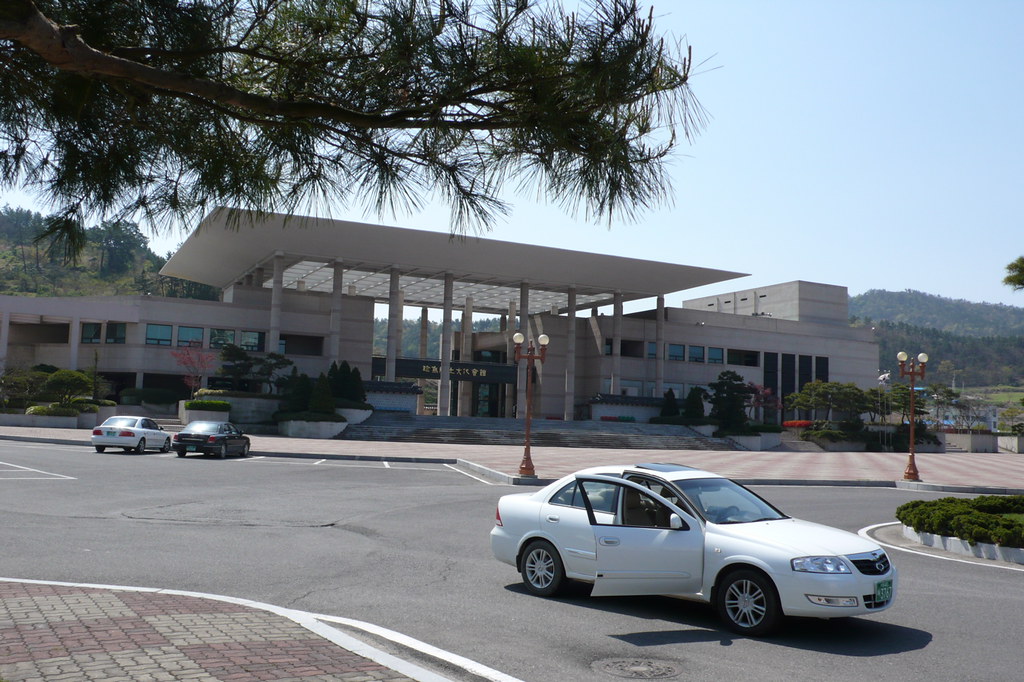
A Tolharubang ( stone grandfather ) is a cute fat thing made of volcanic rock typical of Jeju Island but much loved all over South Korea. This one stands outside the Jindo Culture Center.

Next was the Jindo Dog Research Center. The Jindo or Jindogae is a breed of dog much admired in Korea and unique to this country. It is especially loyal, intelligent and suited to (human) family life. As we approached the cages all the doggies barked and barked. There were no signs of any staff so we wandered around the cages, glanced at the dog circus area and got back in the car. I’d had such expectations. Perhaps the lesson is that visitors should check “show times” before visiting.
We decided to stay on Jindo another night as there was a calm atmosphere which we liked. We opted for a little motel which offered a good view of Jindo Bridge from the third floor. It cost the average 30,000 won and we were delighted. The view alone was worth it.
We had eaten well at a “Good Restaurant” nearby so we returned to eat exactly the same thing again. They were pleased to see us, so much so that the number of side dishes went from generous to outrageous, perhaps thirteen or more. The main dish was hair-tail fish soup. This fish is a beautiful silver ribbon 2-3 feet long and 4cm wide. It has no scales but it’s silver mantle comes away in tiny flakes when cooked giving its stew a magical aspect. It is quite expensive and a favourite in Korea where it can be bought fresh or fresh-salted. I really appreciate its delicate flavour.
We said our goodbyes to Jindo, and we headed to Mokpo on the mainland where the National Maritime Museum awaited us. The museum is well worth a visit, the quality of the building, the exhibition areas and the artefacts would make any town proud. We have found this to be true of all Korean museums visited so far, and there have been a few. From the most prestigious National Museum of Korea (Seoul) to the small, but perfectly formed, Korean Embroidery Museum, all museums seem to be blessed with ample space, light, modern fittings, toilets and (not forgetting) many fine exhibits. I can only conclude that the funding must be very generous.
Mokpo has a cluster of museums within walking distance of each other; apart from the Maritime Museum, there is a Museum of Natural History, of Industrial Ceramics and of Local History. The first two are excellent, whereas the ceramics were disappointing. We thought much more could have been made of high tech applications of ceramics – to fully reflect the “industrial” in the title and to inspire the youngsters of Mokpo in the direction of science and engineering.
Photo of the Maritime Museum
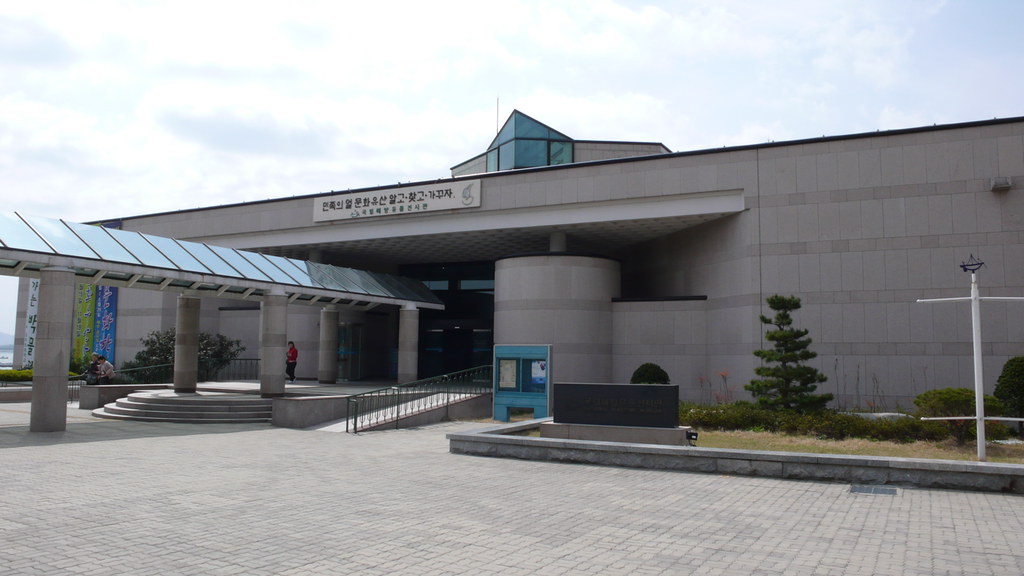
The Maritime Museum is exciting for linking maritime trade between China, Korea and Japan in centuries past. Porcelain was very important, but spices (such as black pepper), sandalwood and copper coins were also traded in volume. Korea was something of a staging post between China and Japan on this leg of the “porcelain road” – The wreck of the Shinan (1323) bound from Ningbo in China to Hakada in Japan provides evidence of this.
Model of the Shinan :
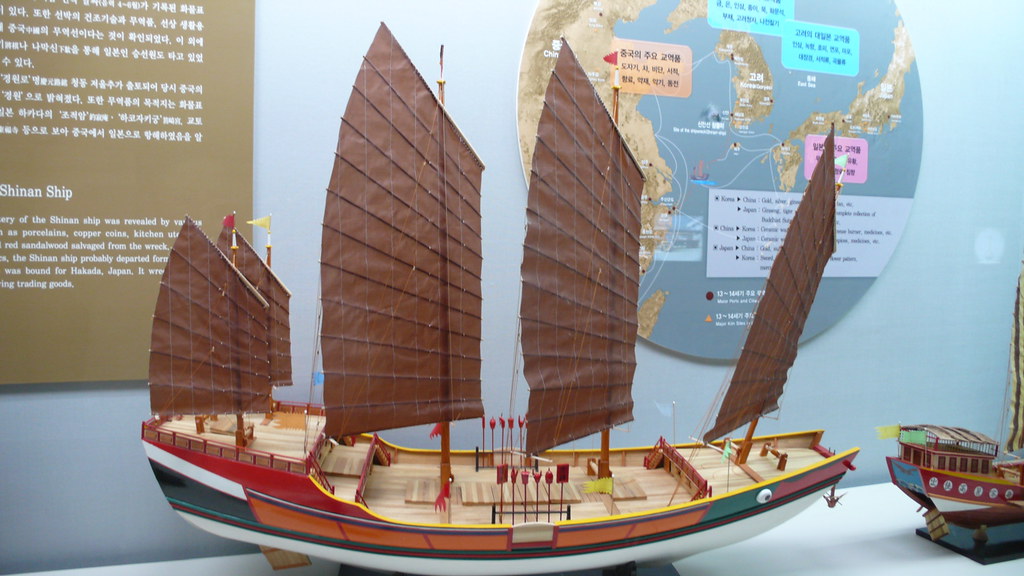
Reconstruction of the hull of the Shinan (wood preserved with PEG)
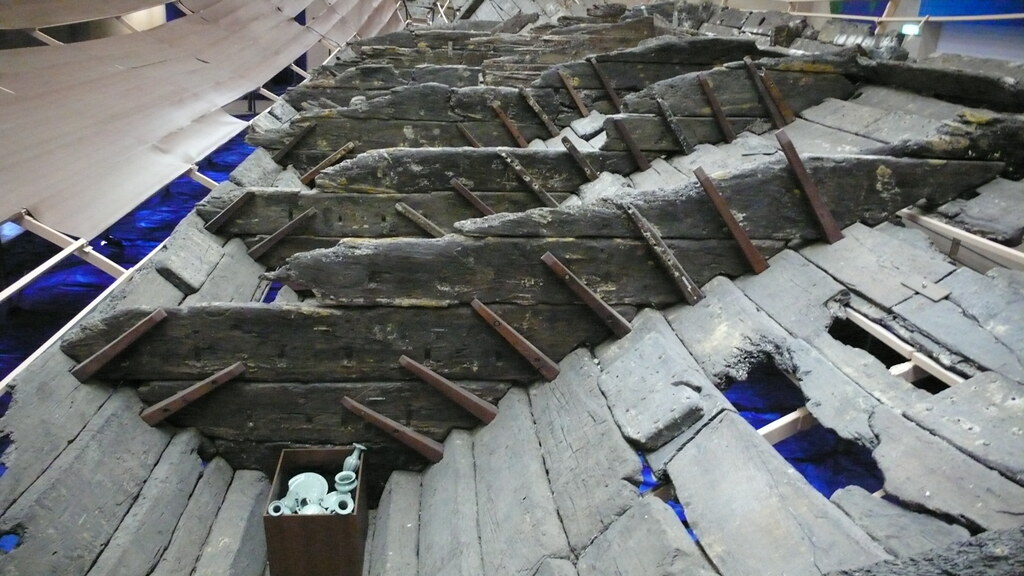
Here are some of the materials recovered from the Shinan :
Water droppers ( used for preparing ink )

Copper coins bound for Japan
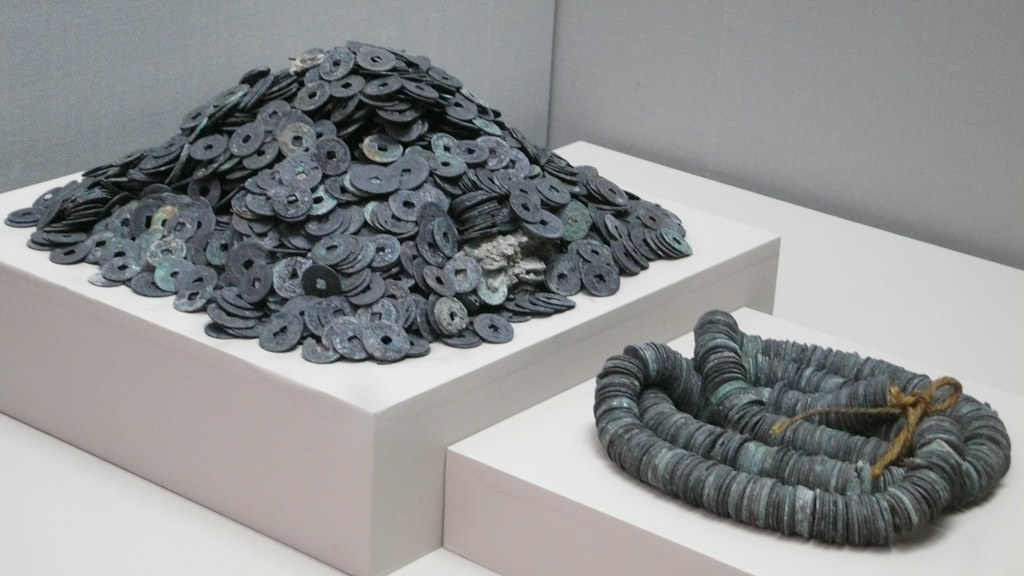
There is a great deal of material on the subject of the Maritime Silk Road, for example : ThinkQuest.org
Now it was time for a late lunch so we went into Mokpo and parked in the harbour area near the dry fish market, where the parking is free and easy. The dry fish market extends over a large area and adjoins a fresh fish area too. Like all markets, it’s a fascinating spectacle. We walked and walked, we saw many heaps of dried seaweed, dried cuttlefish, dried squid, on and on. Unfortunately the profusion of fresh and dried fish somewhat belies its cost. Raw fish for two can easily cost 100,000 won, and when you consider that a very good meal can be had here for 10,000 won ( about £5 ) it simply doesn’t make sense on our current budget. So, we settled for – er – steamed dumplings and hand cut noodles with clams at the princely sum of 6,000 won. Another bargain.
Read Part 3 here.
No comments:
Post a Comment